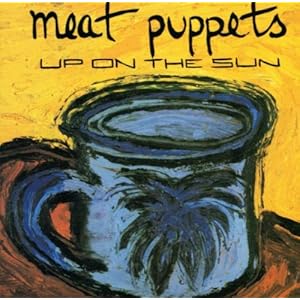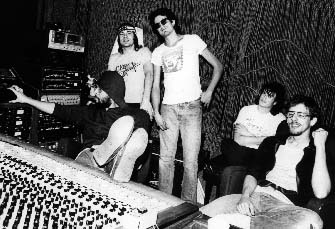I’m so glad the PR guy didn’t respond to my request for an
advance review download of Sun Araw’s latest album, Ancient Romans. He represents a lot of my favorite bands and
independent labels, and he’s usually super responsive. But for some reason this
request was met with silence. I took at as a sign and decided not to ask again.
Best to wait and get it on release day and experience it for the first time the
way it’s meant to be experienced.
I’ve been eager for this release ever since it was announced
way back in May as a double LP on white vinyl with a gatefold cover and a
24-page art book – all words that make a vinyl junkie like me start to twitch.
Sun Araw, a solo project by LA-based Cameron Stallones, has been one of my
favorites ever since I picked up the 2010 Woodsist E.P. Off Duty. A lot of the stuff coming out these days under the banner
of psychedelic rock is little more than simple triads bent by effects pedals,
and it just kind of drones in the background. But Sun Araw is so rich with
overlapping rhythms and freaky twisted notes that it reaches into your head and
squeezes the liquid out of your brain. Off
Duty is like Remain in Light
slowed down, turned inside out, cast in plastic and then melted on a glass
plate that rotates slowly inside a microwave oven, under a strobe. Exactly like
that. It’s the Talking Heads structure, the micro-rhythms and tones neatly
tucked into one another to create a kind of fabric of sound, except with Sun
Araw all the micro-rhythms and tones are distorted with effects and feedback so
they sound like liquid -- thick, melted-plastic liquid. With a little strobe
added. A variable-speed multi-colored strobe hooked up to a rheostat run
through a wa-wa pedal.
After I got Ancient
Romans on release day, I left it in the brown package until it was dark
outside and I was in the right mood. Without opening the gatefold, I pulled out
the first disk. As advertised, it was as white as polished marble, with a
gorgeous label bearing a painting of Roman ruins bathed in red light. I lowered
the tone arm and the room filled with currents of liquid organ sounds and
sternum-rattling waves from bass bombs as I settled into my zero-gravity chair
with the cover and art book. There was no mistaking it: this record was made
for tripping. The cover’s adorned with photos of Roman ruins that are enlarged
just to the point of distortion so the colors shift in and out of one another
and kind of float. On the front page of the booklet are quotes from Hermetica,
Asclepius II -- “Eternity enters into time, and it is in time that all movement
takes place” – and William Blake – “Contracting our Infinite sense we behold
the Multitude, or expanding we behold as One.” Far out. Inside there’s a page
for each track on the album, all bearing images of Roman statues and paintings
of how Rome might’ve looked back in the day. Each features cryptic writings
such as “The Fragrant Gate” and “Primal Splendour, who sends out innumerable
rays, not perceptible by the senses, but collectively thinkable,” all of which
are sure to pleasantly scramble the lysergically tainted mind.
The music’s a bit mellower than the earlier Sun Araw records
I’ve heard, and Stallones has invited a few guest musicians to help him flesh
the project out with angular strains of saxophone, trumpet and harp
synthesizer. Stephen Malkmus of Pavement fame even plays drums on a couple of
tracks. Over all, it’s got a flowering sense to it, with new rhythms and
tightly curled melodies blooming all over the place. It’s fitting because in a
recent interview Stallones said that when he was making the album he “was
spending every day after work reading in this garden of succulents that’s deep
in Griffith Park, being confronted with some very alchemical moments, where
seeds were leaping up to meet these ideas about time, attainment of higher
worlds, etc. Then I would go home and record all night.” So that we, in turn,
can stay up all night enjoying the fruits of his creation.
Sun Araw: Ancient Romans by alteredzones












































